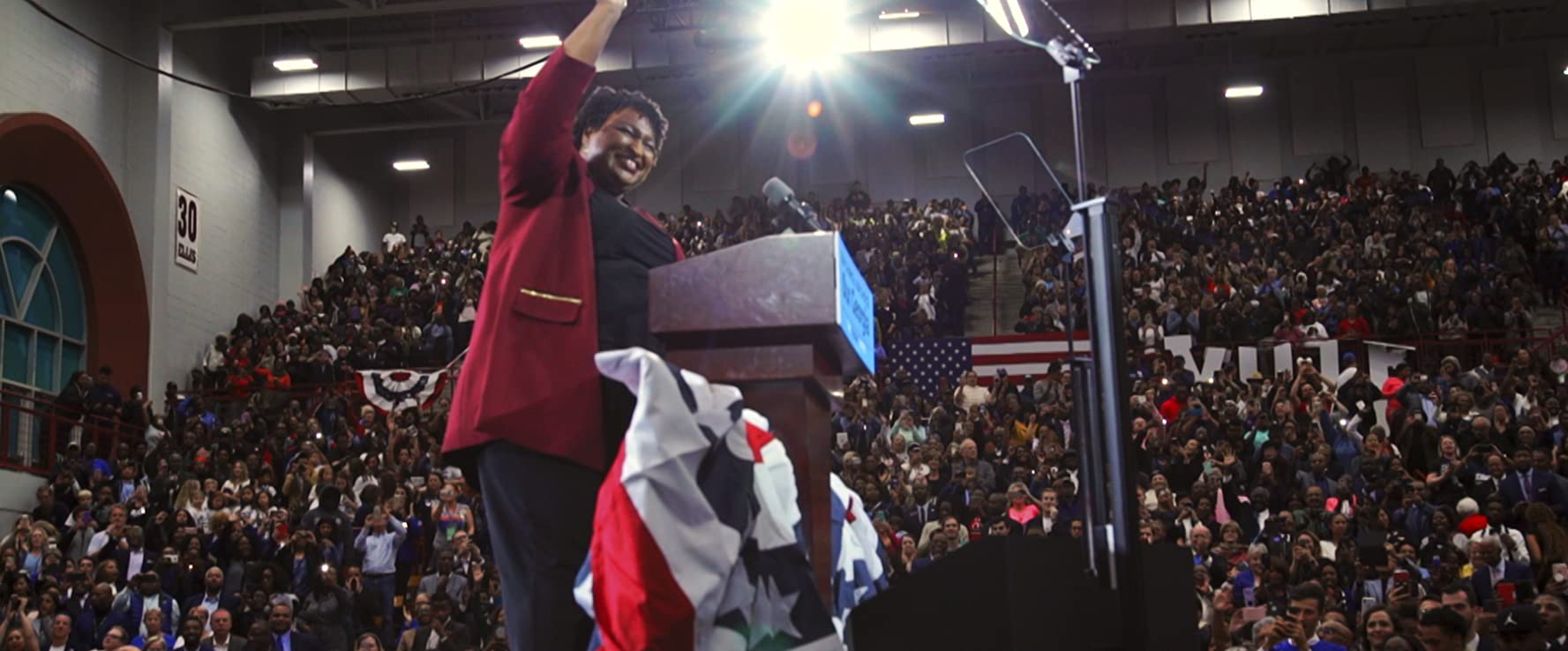Movie Info
Movie Info
- Director
- Lisa Cortes and Liz Garbus
- Run Time
- 1 hour and 42 minutes
- Rating
- PG-13
VP Content Ratings
- Violence
- 1/10
- Language
- 0/10
- Sex & Nudity
- 0/10
- Star Rating
Relevant Quotes
Therefore justice is far from us, and righteousness does not reach us; we wait for light, and lo! there is darkness; and for brightness, but we walk in gloom.

Directors Lisa Cortes and Liz Garbus’s well-produced documentary could not be more timely, coming out just a month or so before the 2020 national elections. The film is a combination of the history of voting and of voter suppression, with a case in point of the 2018 loss of Stacey Abrams in the campaign for the governorship of Georgia to a corrupt politician who had managed to purge well over a million voters from the rolls, as well as shutting down voting places, mostly in districts where her supporters lived. Stung by this unfair electoral process. Ms. Abrams has set forth to right this and to prevent this from happening on a still wider scale this year. The film also sheds light on another trick used by incumbents to cling to power, gerrymandering.
The history of voting that is given is sobering, in that it informs us that when our founding fathers wrote “We the People…” the people they meant were White property owners, less than 10% of the adult population. (And Black slaves were considered just 3/5 a person!) Slowly the states expanded the right to vote, extending it to Black men after the bloody Civil War (and to women not until 1920), guaranteeing freedom for blacks and the right to vote in the 13th 14, and 15th amendments. During the Reconstruction era 2/3 of the African Americans in Mississippi were registered to vote. Unfortunately, an exhausted Republican Party, in order to get their man into the White House, threw in the towel to segregationists and withdrew Federal troops from the South (the only force able to keep the KKK-supported politicians in check), and Reconstruction ended in 1877. Jim Crow reigned supreme, culminating in the racist Mississippi constitution of 1890 that effectively made sure it would be nearly impossible for a Black man to register to vote. By the time I joined the Mississippi Freedom Summer Project in 1964, only 3% of Black residents there were registered. The samples of the so-called Literacy Tests that I saw made sure that not even a college professor could pass if they were applied to all who tried to register. None of the African Americans we dropped off at the courthouse in Bolivar County were able to pass. (Those wanting to know more about the MSFP can read the journal I kept by clicking here.)
The film quickly chronicles the rise of the Civil Rights Movement, culminating, after the Selma Campaign, thanks to the TV coverage of the barbarous tactics of segregationists, in the passage of the 1965 Civil Rights Bill, giving Federal oversight for elections in the states of the former Confederacy. The result was a flurry of voter registration campaigns and the elections of hundreds of Blacks to county and state offices, and then incredibly, to the election of Barack Obama. But the euphoria over this was short-lived. As the script by Jack Youngelson states a couple of times, history can regress as well as regress, and we see how conservatives who made it to the Supreme Court were able to remove the teeth from the Voting Rights Act using the spurious argument that those restrictions on states’ rights were no longer needed because the country had eliminated racism. The film names the culprits, Justice Rehnquist, who had worked to suppress voter registration, and the man whom he mentored, Chief Justice Roberts. And so, the very next day after this infamous decision, the Republicans began their insidious campaign to restrict as much as possible the right to vote. The main reason to justify such repressive laws was “voter fraud,” for which they could offer scant evidence.
Much of the script is based on co-director Carol Anderson’s 2018 book, One Person, No Vote: How Voter Suppression is Destroying Democracy. The resultant film serves as a primer for all those seeking to make this nation a fair and just place for all—women and men, Whites and those lumped under the term People of Color. It is apparent from what happened in Georgia where an unscrupulous racist was able to become governor that such a primer is needed. Ours is a nation that once marched toward freedom but has been turned back, just as those whom we see were turned around at the Edmund Pettus Bridge in 1965. Those watching this film will be inspired to turn us around again and head toward Dr. King’s dream of a free nation.
Good preaching/teaching scene: Carol Anderson tells the story of African American Maceo Snipes, who returned from fighting the Nazis during World War II, believing that this gave him the right to participate in the democracy he had defended at the risk of his life. He was well aware of the threats in his native Georgia against any Black trying to vote, but he went ahead anyway in 1946, becoming the sole Black voter in Taylor County. Just a few hours later four white men pulled up to Anderson’s grandfather’s house where he was staying, one of them knocking and asking that he come outside. The other three shot him in the back. The man charged with the crime claimed he was acting in self defense, even though the victim was shot in the back! The jury exonerated him. (For more details on this click here.) As Anderson says, “The message was clear. You vote, you die.”
This review will be in the October issue of VP along with a set of questions for reflection and/or discussion. If you have found reviews on this site helpful, please consider purchasing a subscription or individual issue in The Store. You will discover that your $39 pays for not just 12 issues of a journal that includes the discussion questions for the films, but a large archive of over 2200 films and even more reviews and special articles in all the issue of past issues of Visual Journals dating to 2012.

